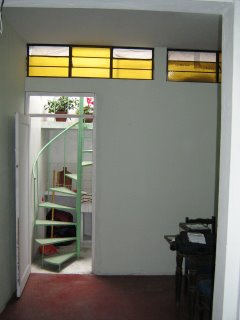 I heard a lot of sirens on Friday morning, but didn´t realize the fire trucks were just down the street on the block where I live. Apparently a short circuit started a fire in the house and it quickly engulfed the walls, which were made of esteras (woven grass mats) nailed to wooden posts. The family was asleep at the time, but fortunately all awoke and were able to escape.
I heard a lot of sirens on Friday morning, but didn´t realize the fire trucks were just down the street on the block where I live. Apparently a short circuit started a fire in the house and it quickly engulfed the walls, which were made of esteras (woven grass mats) nailed to wooden posts. The family was asleep at the time, but fortunately all awoke and were able to escape.On Saturday morning, Sonia and I joined about twenty-five members of the church that the family belongs to, digging through the rubble to find anything that could be salvaged and piling all of the debris in one area. When we started, it looked like a forest of burnt poles with wet burned trash everywhere. This is what it looked like after we finished. The part that Sonia and I worked on had lots of straw, and I asked her whether the family kept animals. ¨No¨, she said, ¨those were their mattresses.¨
About the only things that were salvageable were a few tools and a lot of sheet metal roofing. The family is temporarily living in a lot that is owned by some nuns.















